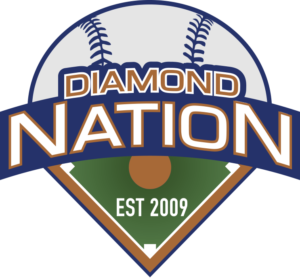NCAA Information
NCAA (National Collegiate Athletic Association): The majority of colleges belong to the NCAA. The NCAA is divided into three divisions. Divisions 1 and 2 may offer scholarships. Division 3 schools do not offer scholarships.
Division 1: Colleges in this division may offer up to 11.7 equivalency baseball scholarships. The minimum requirement for a baseball scholarship with the maximum number of 27 scholarships allowed per team. Teams in this division may only carry 35 players on their roster.
There are numerous requirements and rules for this division so players should pay close attention to the eligibility requirements in the Guide for the College-Bound Student-Athlete. Prospective players must register with the NCAA eligibility center.
Division 2: Colleges in this division may offer up to 9 equivalency baseball scholarships. Academic eligibility requirements are less complicated than D1 and there are fewer restrictions in terms of amateur status. http://www.ncaa.org/student-athletes/future/test-scores Division 2 is the only one that allows tryouts for prospective students. Players must still pay close attention to the eligibility requirements in the Guide for the College-Bound Student-Athlete. Prospective students for Division 2 colleges must register with the NCAA eligibility center.
Division 3: Colleges in this division do not offer any athletic scholarships. Rules for recruiting and eligibility are determined by individual conferences. Prospective players do not have to register with the NCAA Eligibility center.
This is the largest of the three divisions which spans the talent spectrum. Some programs will regularly have players in the MLB draft where at others it’s virtually unheard of. This division also contains the majority of academically demanding schools (exceptions include the Ivy League and Stanford) where being recruited by the baseball coach may help your chances for admission.
NJCAA (National Junior College Athletic Association): The NJCAA consists of 3 divisions with only divisions 1 and 2 offering scholarships. These are generally two-year programs with an occasional school offering some four-year programs.
NJCAA colleges offer 24 scholarships and unlike four-year colleges, players can be on the roster and remain eligible for the draft. Because of this rule, an increasing number of baseball players who want to improve their draft position have taken to playing for a Junior College to improve their skills for the following year’s draft. That means some of these teams have very high quality players on their rosters, including some who have turned down offers from D1 schools. Therefore, do not assume that if you aren’t picked up by a D1 or D2 team, you can always play at the local junior college.
As for eligibility, you need a high school diploma and then according to the NJCAA website:
Due to the unique academic and athletic situation of each individual, and the complexity of the NJCAA eligibility rules, it is recommended that each potential student-athlete discuss their athletic eligibility with the athletic personnel at the NJCAA college where they have chosen to attend.
